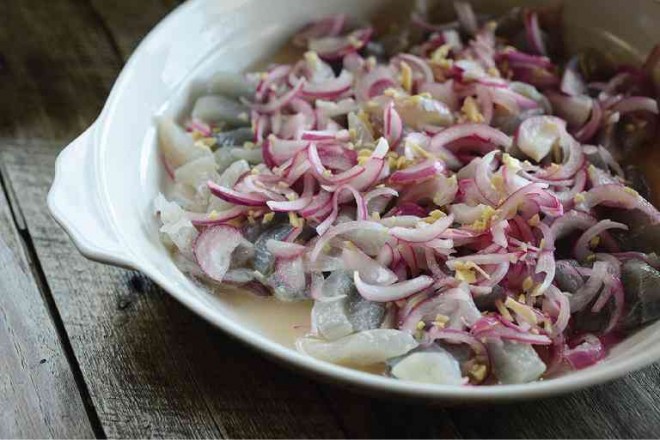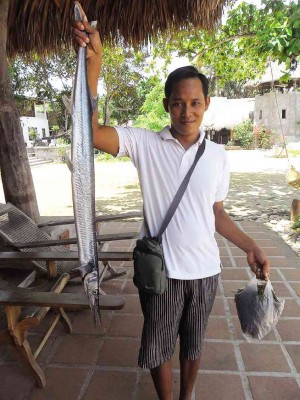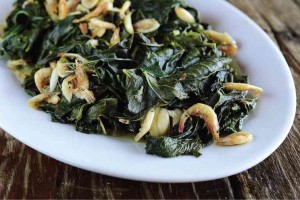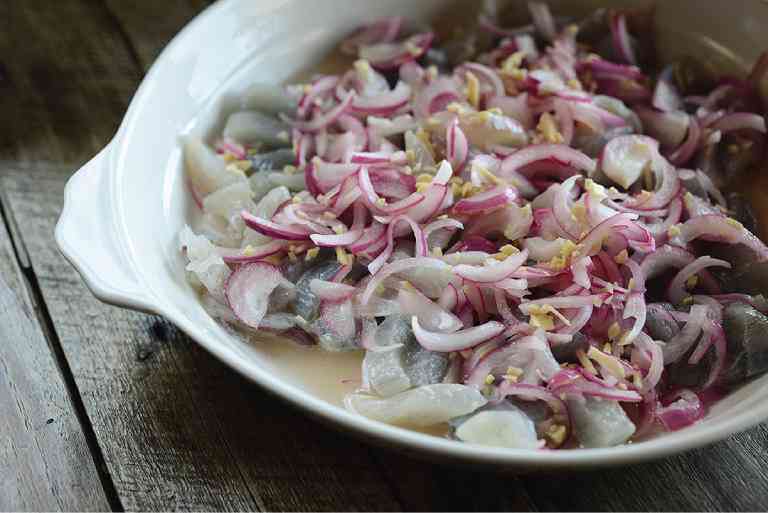
Farm to table. That phrase is used to indicate the freshness of ingredients used to cook a dish, how those ingredients didn’t have to stay long in storage or weren’t transported through a series of middle men.
But can it be used as well for the fish before me, a layalay (needlefish) held by its tail by Pipo who was bringing it in from the fisherman who caught it just that morning and then for the cook to do something about it for lunch?
We were enjoying “doing nothing,” looking out to the sea at Currimao in Ilocos Norte, seated on the butaka (plantation) chairs of Sitio Remedios, wishing the cool sea breeze which fanned us could be exported to steaming hot Manila.
Shortly afterwards, lunch was served and before us were our “sea-to-table” dishes.
Lightly soured
Rene Guatlo, tireless Ilocos promoter of places, products and food, had instructed the cook to do the layalay two ways—as kilawin and as sinigang.
The kilawin had the expertly cut pieces of fish just bathed in Ilocos vinegar, strewn on top with lasona or Ilocos shallots. The translucent flesh tasted a bit sour and salty, the freshness translated to sweetness.
The sinigang was just lightly soured, similar to the Visayan tinola/tinowa. Globules of fish roe were mixed in with the fish slices, including the head. What surprised us was how the fish bones were aqua in color.
All those were perfect with strands of seaweed called pokpoklo looking like small green transparent tubes. We had it for three days already but they were always welcome.
Guatlo said you will never get it in Manila so eat as much as you can during your Ilocos stay. It is served always with tomatoes and nothing else.
You don’t dip the seaweed into any sauce because it doesn’t need it. But you can think of iodine richness as you partake of it, so good with fish.
The saluyot (jute mallow) was encountered while being picked of its leaves by the kitchen staff.
They said the slimy part of the plant is near the small leaves with the flowers. Don’t include that if you don’t want it slimy.
It was cooked the way most Ilocano vegetables are—stewed a bit with Ilocos garlic, the small but potent kind, and some bagoong munamon (fish paste). It was topped with dried small shrimps, dry-sautéed a bit.

It was impossible not to eat a lot. While truly healthy and delicious, the lightness can be deceiving and one can’t get enough of the unadulterated ingredient flavors, enhanced only by a bit of salt or garlic or the shrimp.
“Sea-to-table” experiences have always been so memorable to me.
In one Bohol sortie, I was asked at breakfast whether I wanted sea urchin. I thought it was for lunch. Then a diver dipped into the shallow water. When I asked our host what he was doing, I was told that the diver was getting my sea urchin.
The diver came back about 20 minutes later, with a basket full of rounded spiky shells. He expertly cracked one crosswise with his knife, the one with the black bristles.
The cook of the resort called it suwake, runny and sweetish. The other with the black long spikes she called tuyom and the contents proved to be more solid. What a filling lesson!
In Carigara, Leyte, the market is near the shore where fishing boats dock to bring their produce right where the shoppers are.
Charcoal-broiled
One of the fishmongers was removing the spine and head of the salay-salay (smooth-tailed trevally), preparing it for kinilaw. I ordered half a kilo, enough for a party of five. My mistake was to not wait for my order but to go around, mystified with the choices and being taught the local names of each and how these are cooked.

To my horror, we had reached the next town, Barugo, when the order was remembered. Lunch still had to be cooked and so there was no time to go back. My friends said I could never go back to the market but I did, I did.
In Navotas, Metro Manila, mountains of bangus (milkfish) were forming in front of each consignacion (fish dealer). Some of those will end up in many markets in Manila. We bought a minuscule amount of bangus and one medium-sized lapu-lapu (grouper) that went straight to the kitchen of my friend, Inday Pascual, whose ancestral home is in Malabon.
The bangus was charcoal-broiled. The lapu-lapu was to be fried but I thought that was such a waste of freshness and so volunteered to steam it in soy sauce. You can imagine the good lunch we had, just those fish with rice.
When eating the bangus, however, I was given all the belly because the Pascual family never ate that part. I told them that in my family, the bangus belly is the prized part. I wished that all the belly they discarded could be sent to my house.
Back to our lunch in Ilocos, we prepared to leave the view, the breeze, the fish still to be caught, the shellfish and seaweeds still to be gathered. But we still had dinner in Laoag waiting and the memory of several breakfasts, lunches and dinners during our three-day stay in Ilocos Norte and Ilocos Sur.
E-mail the author at [email protected].
PHOTOS BY PATRICK UY









































